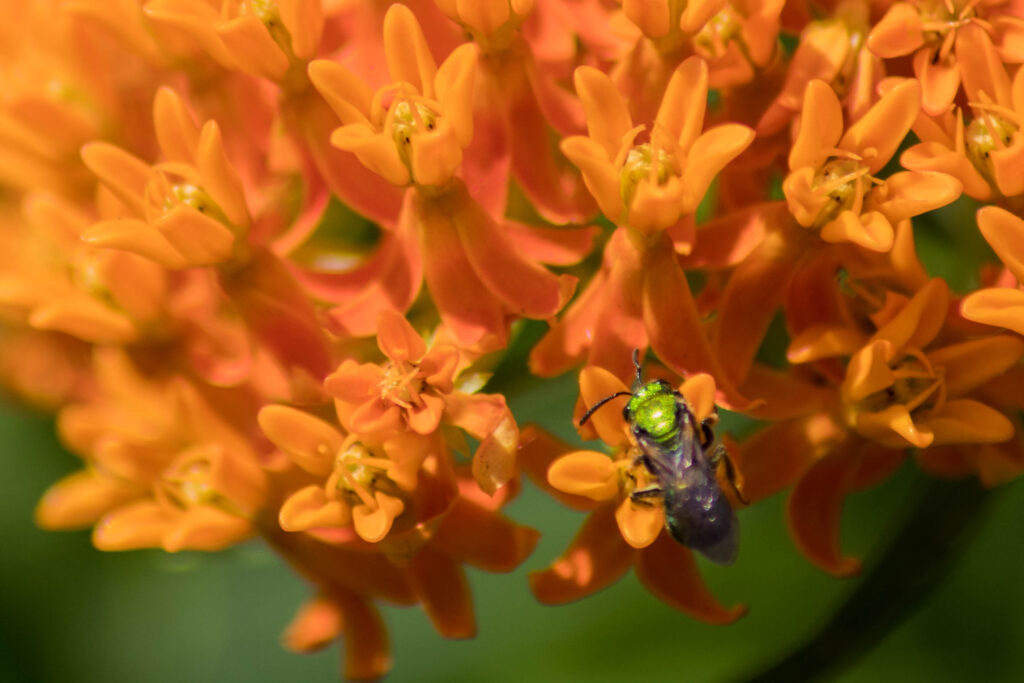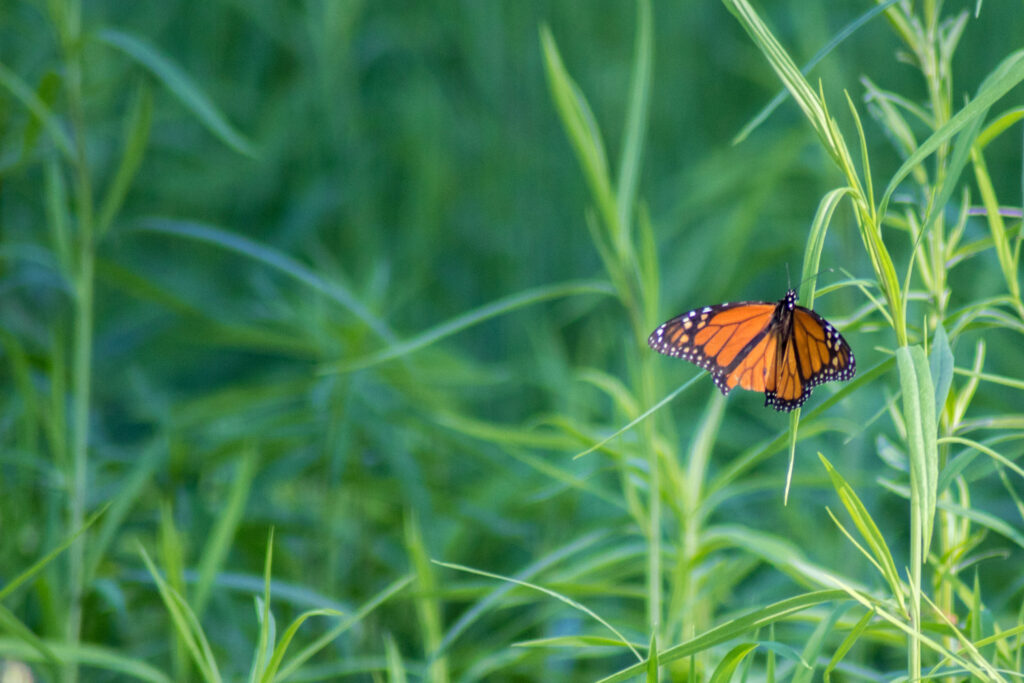Also known as Milkweed, even though it is not a weed, but in fact a widely beneficial native plant. This plant puts out leaves in early spring but doesn’t bloom until the summer months. In the fall watch for the seed pods to burst open in a dazzling show. Don’t forget to leave the stems over winter for beneficial bugs to hide in.

According to the New York Flora Atlas the following milkweeds are native to New York but check their website to ensure the plant grows near you.
| Asclepias amplexicaulis | blunt-leaved milkweed |
| Asclepias amplexicaulis × A. syriaca = A. ×intermedia | intermediate milkweed |
| Asclepias exaltata | forest milkweed |
| Asclepias incarnata ssp. incarnata | western swamp milkweed |
| Asclepias incarnata ssp. pulchra | eastern swamp milkweed |
| Asclepias purpurascens | purple milkweed |
| Asclepias quadrifolia | four-leaved milkweed |
| Asclepias rubra | red milkweed |
| Asclepias syriaca | common milkweed |
| Asclepias tuberosa | butterfly weed |
| Asclepias variegata | white milkweed |
| Asclepias verticillata | whorled milkweed |
| Asclepias viridiflora | green milkweed |

Monarch Butterfly
While milkweed plays a vital role in the ecosystem for many insects, it is of utmost importance to the Monarch caterpillar. While the butterfly will gather nectar from just about anything that is blooming, the caterpillar will only eat milkweed. The monarch has co-evolved with the milkweed in an attempt to protect itself from predators. For example, the caterpillar can handle eating the toxic sap contained in the stems of the milkweed. Important note, wash your hands if you happen to touch the sap. If any happens to get into your eyes seek medical attention immediately. The transformation of the monarch is quite astonishing, read more about it on Monarch Watch.

How to Help
Now you may be wondering how can you help this beautiful monarch butterfly. The good news is there is hope even if you are not a master gardener. There are plenty of opportunities to help, check them out:
- Help reforestation efforts of the overwintering sites (Forests for Monarchs and Monarch Butterfly Fund)
- Ask your mayor to take the Mayors’ Monarch Pledge
- Help raise the quality of life for the locals in Mexico so they do not resort to logging (Alternare)
- Plant native milkweeds to support the monarch life cycle
- Plant native nectar powerhouses especially fall blooming ones such as goldenrod and aster
- Introduce native shrubs and trees as they also support a bunch of butterflies and benefical insects
- Register your polinator garden on Polinator Pathway
- Add signs to your garden about polinators
Don’t forget that sharing is also caring. Share this blog with friends or even gift them milkweed for their own garden! Share information that you learned with your circle of influence. All of the little acts add up to some pretty big impact!
What Not to Do
Likewise, there are a few “do not” items that we need to cover as well. These topics may be hotly debated but we are going to share what the scientist who have dedicated their careers to and what they have found.
- Avoid non-native milkweed species as they can harbor parasites (Tropical and Hairy Ball)
- Do not spray pestacides and encourage others to stop as well
- Say no to captive breeding and monarch releases
- Do not rear monarchs indoors, if you would like to for education pourpuses limit to 10 and keep them outside in a mesh net.
Saving the Monarch butterfly always seems to raise strong emotions. If you have participated in an item on the “what-not-to-do list” that is ok. We are all learning and working on doing better. Keep in mind as more scientists research these topics, these best practices will also change. Keep reading and learning and we will do our best to update this blog as more information becomes available.
Tagging Monarch Butterfly
This topic gets more than a bullet point as it is a bit more involved. Monarch Watch has a program where citizen scientists can place a small round tag on the last generation of Monarch butterflies. This is the group of butterflies that will migrate to Mexico in the East. Once these beauties make it to Mexico the locals are compensated for each tag they bring in, helping their economy. There are several ways you can help. First, you can help by tagging the migratory generation just sign up for a kit on monarch watch. If you are not into catching butterflies then you can always keep an eye out for tags and report any that you find.
Before entering into this program, take some time to really think it through. For the time being, there has not been very much research done on the tags used on the butterflies. Clearly, they don’t do any short-term damage. However, it is unclear if there is any long-term or unseen damage done. In addition, only the tags are recovered which means the butterfly itself is not studied. With the rising number of OE, it would be beneficial for those tagging to provide test results. Then, in Mexico, have the butterfly recovered with the tag and tested for OE again. This would provide some data for researchers and the butterflies could be further studied on other projects as well.
If you enjoyed this post make sure to check out more of our blogs. We will be adding more so make sure to come back and visit often!
